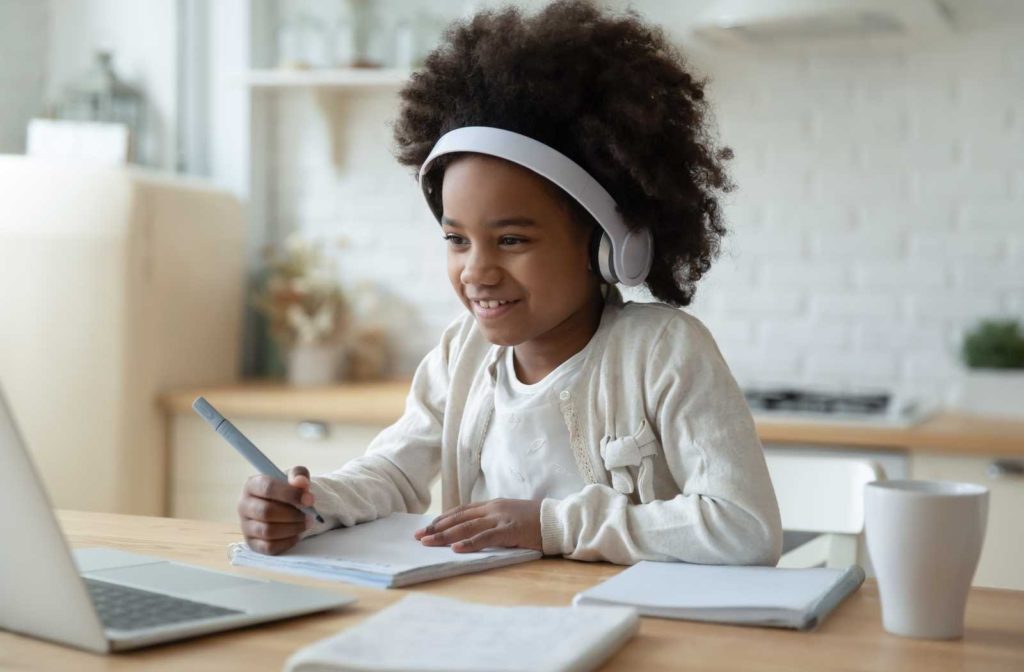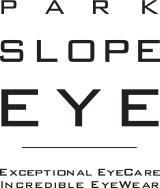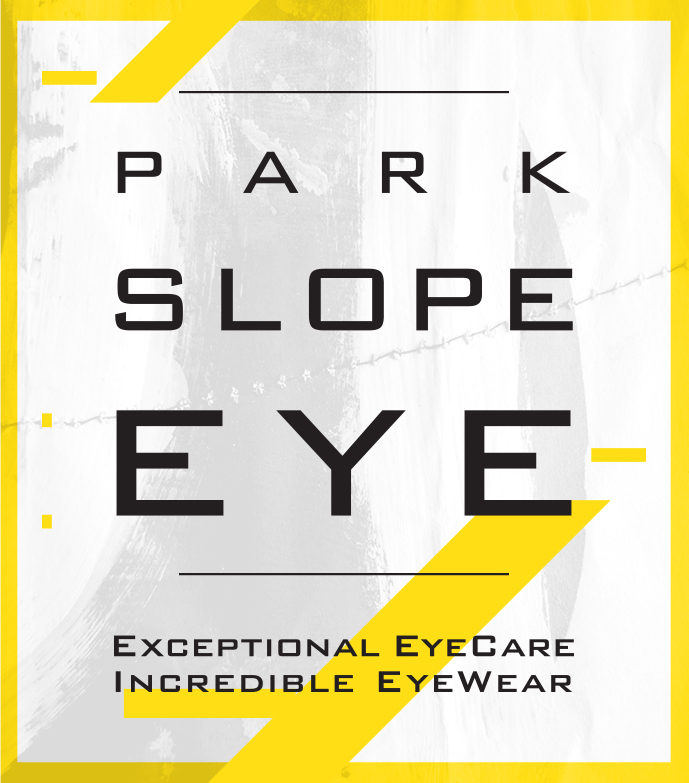With safety concerns regarding social distancing in play, parents have some critical choices to make. Forming cohorts in smaller classes as kids go back to school is a tough choice for some, leaving another option: remote learning. Remote learning means your child has to focus on a screen for many more hours per day than usual — and that means their eyes are at a bit more risk than they’d be otherwise.
Many of our adult patients show signs of digital eye strain, so we have some experience explaining it to them. That leaves us in a position to minimize that risk for your telecommuting child. When it comes time for your annual children’s eye exam, they’ll be better rested to avoid the need for stronger corrective lenses. If you’re making the tough decision about how to educate your child, you’ll need more information on digital eye strain.

Getting a Baseline
Basically put, your child needs to have well-supervised vision and eye health before you commit them to a daily 6-8 hour school day — over a digital meeting room.
According to the American Optometric Association, it’s vital to get your child an annual eye exam (with a pediatric focus). To get an accurate baseline for your child, they need an eye exam once before the age of 1, again before the age of 5, and annually after that. Why?
Children grow a lot from when they’re babies to youth, and their eyes are no exception. From around 14mm at birth to just under 24mm by adulthood, a healthy child’s axial length naturally increases quite a bit. Adding digital eye strain to a growing eye can have adverse effects.
What is Digital Eye Strain?
Digital eye strain itself is a form of repetitive stress. Repetitive stress injuries impact affected areas when you’re doing something over and over again. You might not notice how your eyes are working overtime. Still, when you concentrate, muscles are controlling your eyeball, flexing to stay focused.
Your irises can also narrow and widen to let the ideal level of light in. But concentrating on your screen for many hours at a time is just like holding your wrist or arms in a stress position.
You might think that stress to one part of your body will only affect that area. But your body is an interconnected system. But as you might know from your own experience, stress on one part affects others. Some of the main symptoms of digital eye strain are:
- Double vision
- Blurred vision
- Headaches
- Tired eyes
- Dry eyes
- Sore eyes
- Sore back or neck
- Trouble sleeping
- General fatigue
When it comes to kids, they might not be able to tell you the problem, let alone whether to visit an eye doctor about what they’re going through. It could also manifest as an inability to focus on classwork, poor performance, or even acting out. Kids tend to react to discomfort by avoiding it.
What are Some Individual Causes of Digital Eye Strain?
Digital eye strain is the wreckage from a “perfect storm” of a few different factors. While most of it comes from what the muscles are doing, the computer screen, reading or concentration habits, and ergonomics also play a part.
Flexing Eye Muscles
Digital eye strain mostly owes to concentrating too hard with your eyes for too many uninterrupted periods. While your child is in the digital classroom, they’ll have to practice reading through the screen to the blackboard, switching attention from the screen to a notepad or loose-leaf paper. They’ll also be focusing on the faces of their class, especially their teacher. This kind of pattern can result in repetitive stress on your child’s eye muscles as well as their irises.
Blinking Less
According to the University of Iowa, a random sample of people blinked 66% less when using a digital display than without. Not blinking enough can lead to dry eye, which manifests as red coloration, irritation, and more in your eye. Digital eye strain can magnify the effects of dry eye as well. While we see less dry eye in children, going to class on a computer screen could change that.
Blue Light & Melatonin
Blue light is not dangerous, but the blue light from most digital displays is a frequency that can lead to other effects. Your child’s circadian rhythm involves, in part, the release of chemicals, especially melatonin, whenever it detects blue light. Blue light leads to wakefulness, so your eyes tend to focus on absorbing it, suppressing rest, and relaxation.
Working Around Digital Eye Strain
You might be tempted to look for quick solutions, like a DIY vision test to monitor your child’s eyes for changes. That’s understandable, quite frankly, but self-tests lack a doctor’s touch. Online vision tests might give parents a false sense of security.
Eye Doctors & Eye Exams
61% of children lack the diagnoses they need because they put too much trust in non-optometric vision testing. A child’s eye is a growing, living thing, making a doctor’s opinion relevant to ensuring health and wellness. When repetitive stress and disrupted sleep because of eye strain work together, your child might experience worse effects.
Sleep
So many people sleep at night because your brain doesn’t get the big dose of blue light that comes part and parcel with sunlight. Your eye muscles really benefit from the relaxation sleep provides, and it can’t be underestimated as a remedy for the eye muscles’ “work” of focusing on a screen. Make nap time and consistent bedtimes almost sacred. Some parents swear by putting their kids to bed early as 7:30pm or 8:00pm or scheduling multiple naps whenever possible.
Naps
If your child is in class meetings around nap time, they’re going to need a cooldown period. Try getting them away from their screen for a 20-minute snack break, followed by a nap.
Screen Settings & Ergonomics
Try using night mode or dark mode themes on their apps, class chatrooms, and display background images, especially after the morning classes. Training them to use eye relaxation techniques can also work wonders.
20/20/20 Rule & Ergonomics
When your child looks at a screen for hours on end, it’s best to have the screen at a 45-degree angle down from eye level. Teach them to keep their heads straight, not opening their eyes too wide. And remember to blink and take breaks to shake everything out!
Optometrists often promote the 20/20/20 rule. No matter how well you think your child is handling the increased screen-time have them practice this rule:
- Every 20 minutes
- Relax, and look at an object 20 feet away
- Count 20 seconds
Safeguarding Your Child’s Vision
Now that your kids are going to be using a computer screen for school work a lot more, there’s more screen time as well. In many households, they’ll still use social media or digital entertainment once classroom hours are up.
Annual children’s eye exams are much more important for children doing remote learning. Book an appointment to learn how your children are responding to new levels daily screen time.








